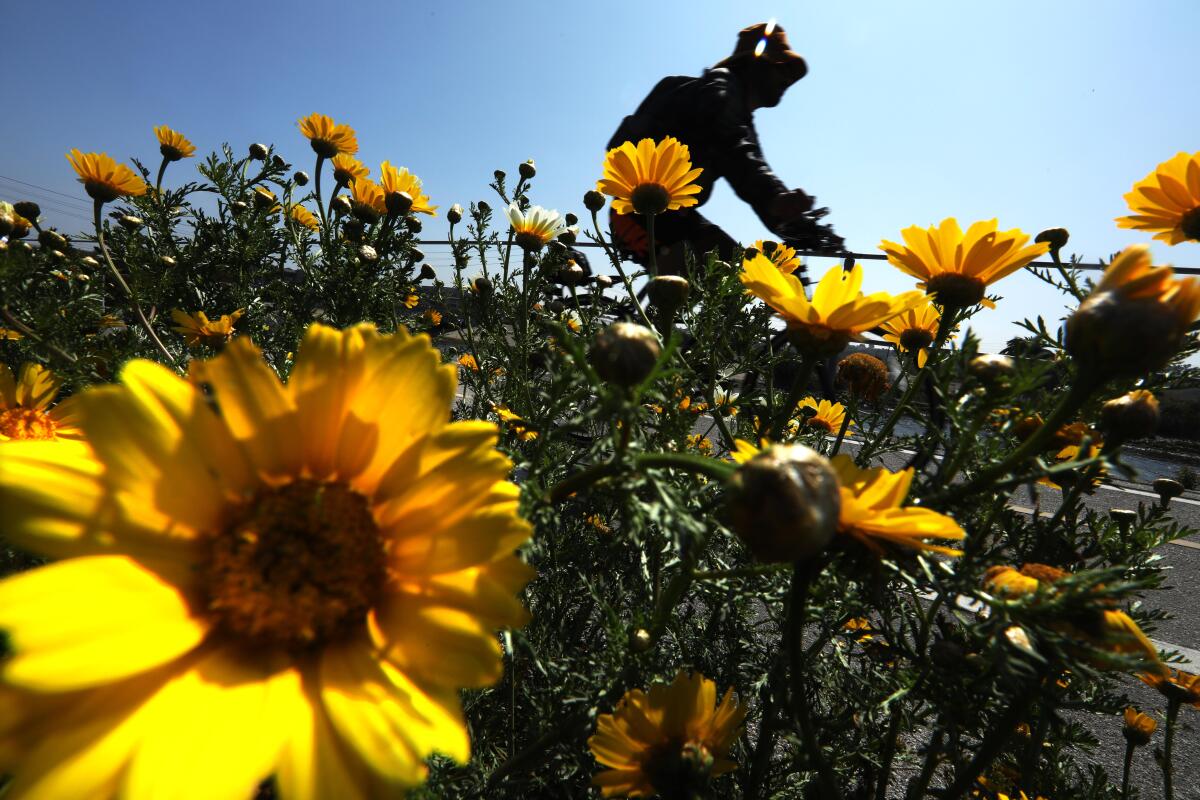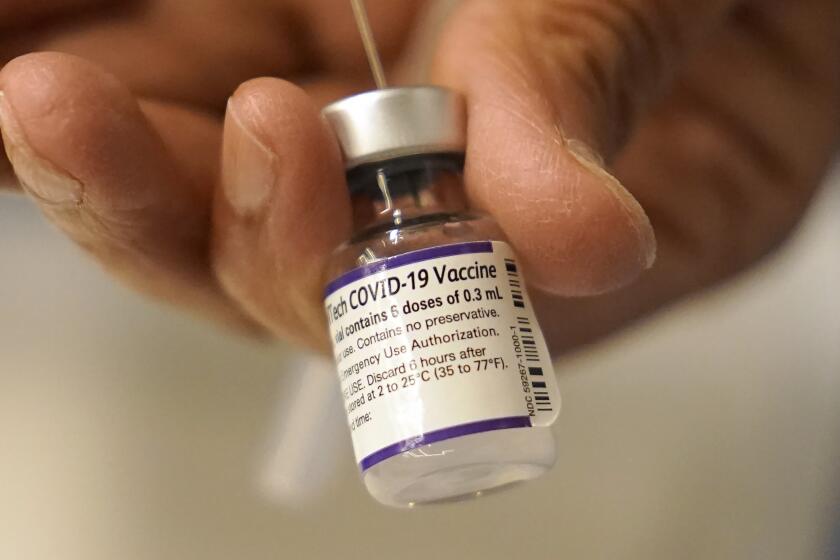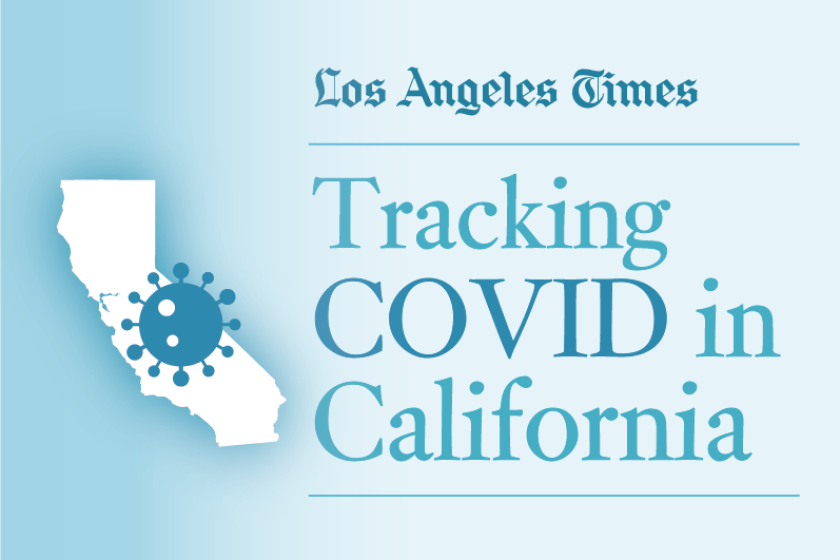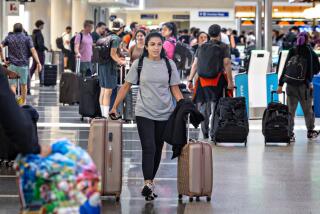You’re sneezing and coughing. Is that allergies or COVID?

It’s a confusing time for pollen-sensitive Southern Californians.
Spring has arrived, bringing with it the sneezing, coughing and wheezing triggered by seasonal allergies. The Santa Ana winds expected to gust this week will cause their share of stuffy noses and scratchy eyes as well.
But at the same time, a coronavirus subvariant dubbed BA.2 is gaining steam, reversing the steady decline in COVID-19 cases we’d seen since the Omicron variant caused a huge winter surge.
So if you’re working your way through a box of tissues, you may be wondering — is this pollen or something worse? (And by that I don’t mean dust mites.)
Experts say that it may be harder to distinguish an allergic response from a coronavirus infection if you’re fully vaccinated, given the protection you’ll have against a more severe case of COVID. Nevertheless, they point to a few telltale signs to help you decide whether to get tested or see a doctor.
It’s helpful to start with a look at what allergies are and how the body responds to them.
An allergy is an overreaction by your immune system to an otherwise harmless substance, such as tree pollen or cat dander, that you inhale, swallow or touch. The immune system interprets the substance as a threat, spawning an antibody specific to it (or mobilizing one, if the antibody already exists).
At a very high level, that’s also how the body reacts to the coronavirus that causes COVID-19. In the case of an allergy, though, the antibodies stimulate the cells in the affected area to release an excessive amount of histamine, a chemical that (among other things) causes your nose to run and your eyes to itch as the body tries to expel the unwelcome substance. Left untreated, a runny nose can also cause a trickle of mucus from the sinus into the throat (“post-nasal drip”) that can add a cough to your sneezes.
Coughing is a sign of a COVID-19 infection too, as is congestion, said Dr. Rita Kachru, section chief of clinical immunology and allergy at UCLA. That’s not because of histamines, however; there’s a completely different mechanism at work when the coronavirus invades your airways. All the same, it’s part of the symptoms overlap that the Centers for Disease Control and Prevention illustrated with this chart on Twitter:
As the CDC notes, there are at least four differences that could distinguish your allergies from COVID. Fever, body aches and loss of a sense of taste or smell are common among COVID patients but not allergy sufferers. Also, people with COVID may feel short of breath, but you wouldn’t ordinarily experience that with allergies unless you had asthma, the CDC says.
Just as fever is usually a telltale sign of an infection, an itchy nose is usually a giveaway for allergies. “You’ll never get itchiness from a virus or bacteria,” Kachru said.
But not every coronavirus infection plays out the same way, so the absence of fever, body aches or disconnected taste buds isn’t a sure sign that you don’t have COVID.
That’s why the first thing you should do is consider your symptoms in context, said Dr. Dean Metcalfe, a principal allergic disease investigator at the National Institute of Allergy and Infectious Diseases. Do your allergies usually pick up around this time of year? Are you having symptoms beyond the usual sniffling and sneezing? Have you been around somebody suffering from the flu or COVID-19?
The FDA and CDC offered little guidance about who should get the newly authorized second COVID-19 booster shot. We break it down.
“By and large, when you get the flu or COVID-19, the predominant problems are not this intense itching you get with allergies,” Metcalfe said, adding, “Those things that suggest a wider inflammatory response outside the upper airways are what you have to look out for.”
Another test: If you have allergies that plague you all year, such as a sensitivity to dust or to your cat, you should have an idea of your usual level of misery. What you’re looking for, said Kachru, is “an increase in the symptoms or a shift in the symptoms.” Maybe there’s more coughing, a lot more drainage or discoloration in the draining, she said.
Also, if you have asthma and your symptoms worsen, “you really need to see your doctor” even if you’re not sure whether it’s COVID, Metcalfe said.
The differences blur, however, if you’ve been fully vaccinated. On the positive side, Metcalfe said, “you are not at high risk for something severe.” He added, “You don’t worry too much unless you get fever, chills [or] myalgia,” the muscle aches and pains that can accompany COVID.
Kachru pointed to one other potential source of non-COVID misery in Southern California this weekend: the powerful winds that are expected to blow through the area. People who are sensitive to the onslaught of airborne particles, diesel fumes and air pressure changes will experience vasomotor rhinitis, which she described as a more nerve-related issue that results in an irritated, runny and congested nose.
Here’s one more reminder: “Always err on the side of testing,” Kachru said. If you suspect your tormentor is COVID and not the flowers blooming in your yard or the Santa Ana winds, you can still get tested for free, order a free test kit from the federal government, or obtain an at-home test kit paid for by your insurer.









